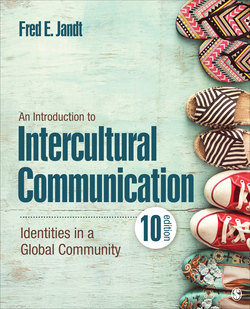Читать книгу An Introduction to Intercultural Communication - Fred E. Jandt - Страница 17
На сайте Литреса книга снята с продажи.
Race, Skin Color, Ethnicity, and Identity
ОглавлениеWhile class and gender may not have the same strength of regulation of human life and identity creation as national identity, some will argue that race and skin color do. When people speak about Race, they usually refer to visible physical features such as skin color.
Why are we more aware of skin color than of other variables that distinguish each of us? For example, how aware are you of having detached or attached earlobes?
iStockphoto.com/Soulbrette
From this popular biological perspective, race refers to a large body of people characterized by similarity of descent (Campbell, 1976). From this biologically based definition, your race is the result of the mating behavior of your ancestors. The biologically based definition is said to derive from Carolus Linnaeus, a Swedish botanist, physician, and taxonomist, who said in 1735 that humans are classified into four types: Africanus, Americanus, Asiaticus, and Europaeus. Race became seen as biologically natural and based on visible physical characteristics such as skin color and other facial and bodily features. In the 19th century, the “racial sciences” rank ordered distinct races from the most advanced to the most primitive. Such science became the basis for hospitals segregating blood supplies, Hitler’s genocidal Germany, and South Africa’s apartheid state.
While some physical traits and genes do occur more frequently in certain human populations than in others, such as some skull and dental features, differences in the processing of alcohol, and inherited diseases such as sickle-cell anemia and cystic fibrosis, 20th-century scientists studying genetics found no single race-defining gene. (Focus on Culture 1.1 considers whether one’s DNA reveals anything about one’s cultural identity.) Popular indicators of race, such as skin color and hair texture, were caused by recent adaptations to climate and diet. Jablonski and Chaplin (2000) took global ultraviolet measurements from NASA’s Total Ozone Mapping Spectrometer and compared them with published data on skin color in indigenous populations from more than 50 countries. There was an unmistakable correlation: The weaker the ultraviolet light, the fairer the skin. Most scientists today have abandoned the concept of biological race as a meaningful scientific concept (Cavalli-Sforza, Menozzi, & Piazza, 1994; Owens & King, 1999; Paabo, 2001).
A second way to define race, then, is as a sociohistorical concept, which explains how racial categories have varied over time and between cultures. Worldwide, skin color alone does not define race. The meaning of race has been debated in societies, and as a consequence, new categories have been formed and others transformed. Dark-skinned natives of India have been classified as Caucasian. People with moderately dark skin in Egypt are identified as White. Brazil has a history of intermarriage among native peoples, descendants of African slaves, and immigrants from Europe, the Middle East, and Asia, but no history of explicit segregation policies. So in Brazil, with the world’s largest Black population after Nigeria, and where half of the population is Black, there are hundreds of words for skin colors (Robinson, 1999), including a census category pardo for mixed ancestry.
The biologically based definition establishes race as something fixed; the sociohistorically based definition sees race as unstable and socially determined through constant debate (Omi & Winant, 1986). While race is associated with physical appearance, when people speak of Ethnicity they generally refer to shared heritage, family names, geography, customs, and language passed on through generations (Zenner, 1996). For some, tribe would be a more understood term. In Afghanistan, for example, people identify by tribes—Tajiks and Pashtuns. According to some estimates, there are 5,000 ethnic groups in the world (Stavenhagen, 1986). In Chapter 2, you’ll read more about race and ethnic groups.
As discussed in Focus on Culture 1.2, the U.S. Census Bureau establishes categories of identity.
